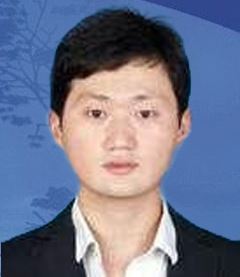IntroductionHu Ziyu, holds a doctoral degree and is mainly engaged in the design and development of low dimensional material properties and electronic devices. He focuses on key fundamental scientific issues related to post molar electronic functional materials and devices. Based on the interdisciplinary integration of materials, physics, chemistry, electronics, and information, he conducts in-depth and systematic research work through theoretical prediction, experimental preparation, physical property control, and device application ideas. Hosted sub projects of the National Key Research and Development Program, National Natural Science Foundation of China, and multiple horizontal projects, at Published SCI papers in journals such as Common., Adv. Material., Adv. Functional Material., Nanoscale, Phys. Rev. B, Phys. Rev. Material., App. Phys. Lett., Phys. Chem. Chem. Phys.et.al. EducationWork ExperienceSocial PositionSocial ActivitiesResearcha) Theoretical research on the physical properties of semiconductors is essential for the semiconductor optoelectronic function of low dimensional materials. Defects in periodic lattices are both inevitable influencing factors and indispensable means of regulation. We focus on the effects of functionalization, defects, heterojunctions, etc. on the electronic structure, luminescence, and conductivity of low dimensional semiconductors, extending to light emission and detection devices. Ultra thin semiconductors not only facilitate the continuation of Moore's Law, but also meet the new requirements of flexible and wearable devices, while possessing moderate bandgap and high mobility are key challenges. We theoretically design new two-dimensional semiconductors and facilitate their experimental synthesis and study of their optoelectronic properties. (Nature Comm, 2017, Angew. Chem. Int. Ed. 2016, DOI: 10.1002/anie.201605102R1, Applied Physics Letters 2015, 107, 022102, Physical Chemistry Chemical Physics 2015, 17, 1099, Journal of Chemical Physics 2014, 141, 084711) On the other hand, in the study of the mechanism of optoelectronic materials, first principles molecular dynamics and density functional theory are mainly used at the atomic scale to explore the arrangement of small molecules adsorbed on the surface of rutile TiO2 (110) and rutile TiO2 (101) and their photocatalytic reaction mechanism. At the same time, the photocatalytic performance of materials such as titanium dioxide/BiVO4 modified by defects, heterojunctions, etc. is studied. (Advanced Energy Materials 2016, 10.1002, Advanced Functional Materials 2015, 25, 3726, Journal of Chemical Physics 2010, 132, 024703.) b) Thermoelectric Materials and Transport Performance Research Electron phonon coupling provides the possibility of direct conversion of thermal and electrical energy, but at the same time, it brings many challenges to the regulation of material electronic and phonon transport properties to improve thermoelectric performance. Our research group mainly focuses on the recent research results of decoupling electronic transport properties through band engineering and reducing lattice thermal conductivity through phonon engineering. We explain the effective ways to improve the thermoelectric properties of materials by regulating electronic phonon structure and scattering through crystal structure, chemical composition, and defect control. (Nanoscale 2023, 15, 1522-1528, JPCC,2022, 126, 12735,PCCP,2024, 15, 970.) TeachingLead undergraduate required courses Statistical Physics, College Physics Experiment, and graduate courses Computational Physics PostgraduatesFundingVertical project: Research on Key Technologies for Automated Separation of Ultra trace Inert Gases Kr and Xe National Key Research and Development Program 2024-05-07-2026-11-30 Enable Theoretical Study on Quantum Control of Novel Structural Phases and Edge States of Two Dimensional Materials National Natural Science Foundation of China project 2017-01-01-2019-12-31 Enable Vertical ProjectHorizontal ProjectPublications[1]. Ziyu Hu; Junfeng Gao*; Shengli Zhang*; Jijun Zhao; Wenhan Zhou; Haibo Zeng; Topologically protected states and half-metal behaviors: Defect-strain synergy effects in two-dimensional antimonene, Phys. Rev. Mater., 2019, 3(7):074005-074005. SCIE. [2]. Ziyu Hu; Kai Yue Li; Yong Lu; Yan Huang; Xiao Hong Shao*; High thermoelectric performances of monolayer SnSe allotropes, Nanoscale, 2017, 9(41):16093-16100. SCIE. [3]. Ziyu Hu; Yingchun Ding; Xuemin Hu*; Wenhan Zhou; Xuechao Yu; Sheng Li Zhang*; Recent progress in 2D group IV–IV monochalcogenides: synthesis, properties and applications, Nanotechnology, 2019, 19: 252001-252027. SCIE. [4]. Ziyu Hu; Sheng Li Zhang*; Chun Fang Zhang*; Donor–acceptor units modulate the electronic and photoluminescence characteristics of thiophene oligomers, J. Appl. Phys., 2019, 126(245501). SCIE. 第一标注 [5]. Ke Lu, Ziyu Hu, Jizhen Ma, Houyi Ma, Liming Dai, Jintao Zhang*, A rechargeable iodine-carbon battery that exploits ion intercalation and iodine redox chemistry, Nat. Commun., 2018, 8(527). SCIE. [6]. Kang Li#, Ziyu Hu#, Jizhen Ma, Song Chen, Dexu Mu, and Jintao Zhang*, A 3D and Stable Lithium Anode for High-Performance Lithium–Iodine Batteries. Adv. Mater., 2019, 1902399, 1-9. SCIE. AwardsPatentHonor RewardAdmissions Information |

